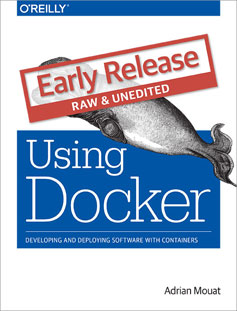"CoreOS" entries

Swarm v. Fleet v. Kubernetes v. Mesos
Comparing different orchestration tools.

Buy Using Docker Early Release.
Most software systems evolve over time. New features are added and old ones pruned. Fluctuating user demand means an efficient system must be able to quickly scale resources up and down. Demands for near zero-downtime require automatic fail-over to pre-provisioned back-up systems, normally in a separate data centre or region.
On top of this, organizations often have multiple such systems to run, or need to run occasional tasks such as data-mining that are separate from the main system, but require significant resources or talk to the existing system.
When using multiple resources, it is important to make sure they are efficiently used — not sitting idle — but can still cope with spikes in demand. Balancing cost-effectiveness against the ability to quickly scale is difficult task that can be approached in a variety of ways.
All of this means that the running of a non-trivial system is full of administrative tasks and challenges, the complexity of which should not be underestimated. It quickly becomes impossible to look after machines on an individual level; rather than patching and updating machines one-by-one they must be treated identically. When a machine develops a problem it should be destroyed and replaced, rather than nursed back to health.
Various software tools and solutions exist to help with these challenges. Let’s focus on orchestration tools, which help make all the pieces work together, working with the cluster to start containers on appropriate hosts and connect them together. Along the way, we’ll consider scaling and automatic failover, which are important features.

Boost your career with new levels of automation
Elevate automation through orchestration.

As sysadmins we have been responsible for running applications for decades. We have done everything to meet demanding SLAs including “automating all the things” and even trading sleep cycles to recuse applications from production fires. While we have earned many battle scars and can step back and admire fully automated deployment pipelines, it feels like there has always been something missing. Our infrastructure still feels like an accident waiting to happen and somehow, no matter how much we manage to automate, the expense of infrastructure continues to increase.
The root of this feeling comes from the fact that many of our tools don’t provide the proper insight into what’s really going on and require us to reverse engineer applications in order to effectively monitor them and recover from failures. Today many people bolt on monitoring solutions that attempt to probe applications from the outside and report “health” status to a centralized monitoring system, which seems to be riddled with false alarms or a list of alarms that are not worth looking into because there is no clear path to resolution.
What makes this worse is how we typically handle common failure scenarios such as node failures. Today many of us are forced to statically assign applications to machines and manage resource allocations on a spreadsheet. It’s very common to assign a single application to a VM to avoid dependency conflicts and ensure proper resource allocations. Many of the tools in our tool belt have be optimized for this pattern and the results are less than optimal. Sure this is better than doing it manually, but current methods are resulting in low resource utilization, which means our EC2 bills continue to increase — because the more you automate, the more things people want to do.
How do we reverse course on this situation? Read more…